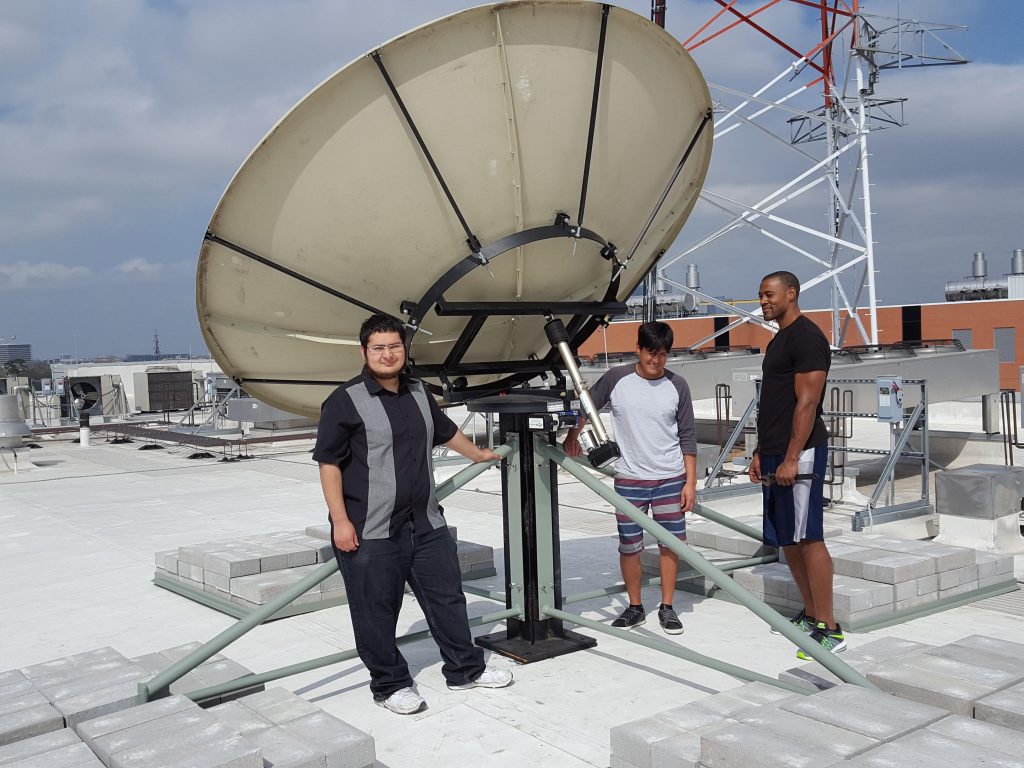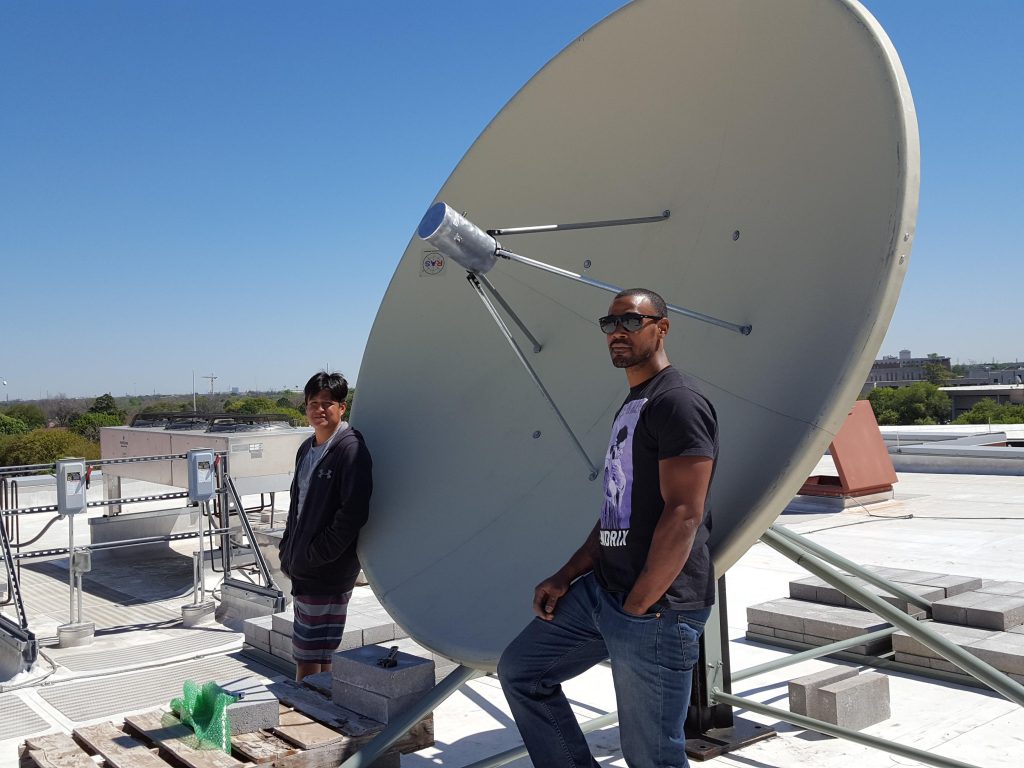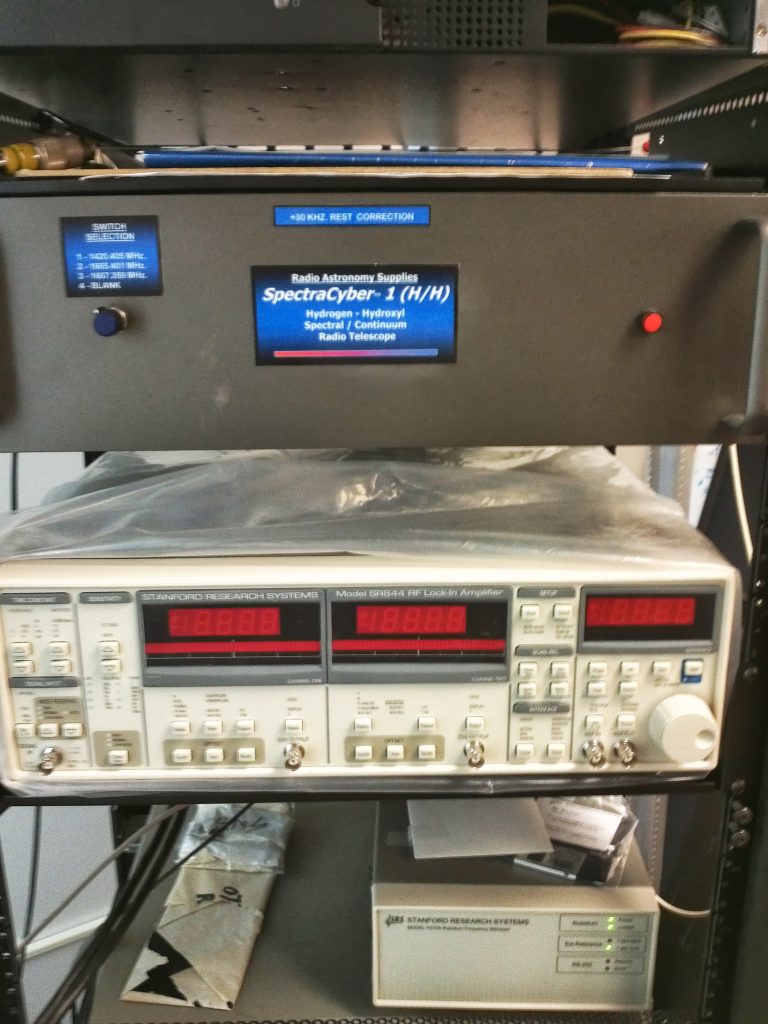or keep pressing Tab key no navigate
Located on the roof of the Spearman Technology Bldg the Department of Physics has installed a 3m antenna plus the electronic equipment to conduct observations at a wavelength of 18cm. In addition, we have a simple multi-channel autocorrelator to process the signal and additional software for calibration. Finally, we also own a CASPER-ROACH dual correlator for high-resolution multi-frequency processing.

With the standard setup we can detect the galactic Neutral Hydrogen (HI) and the 1665/1667 MHz OH MASER transitions in star forming regions and late-type stars. While HI emission allows us to track and map the morphology of the Milky Way galaxy; OH, H2O and CH3OH MASERs allow us to study particular periods of the star formation process. One of the major advantages of radio astronomy is that it detects radiation in regions where optical telescopes cannot. Due to large amounts of gas and dust in these regions visible radiation does not find is way through. Also, the physical processes in these regions are low energy driven so they can only be observed and studied in the radio and infrared regimes of the electromagnetic spectrum.

Researchers have also access to National and International observatories like: Very Large Array (VLA), Very Large Baseline Array (VLBA) in the USA, European VLBI Network (EVN) and MERLIN (UK) to study the radio emission in various fields of research. The future of Radio Astronomy is very bright and promising. In the last decade new multimillion-dollar arrays with the latest instrumentation and technologies have been built like ALMA (mm-array in Chile) and SKA (square km-array in So. Africa & Australia).
